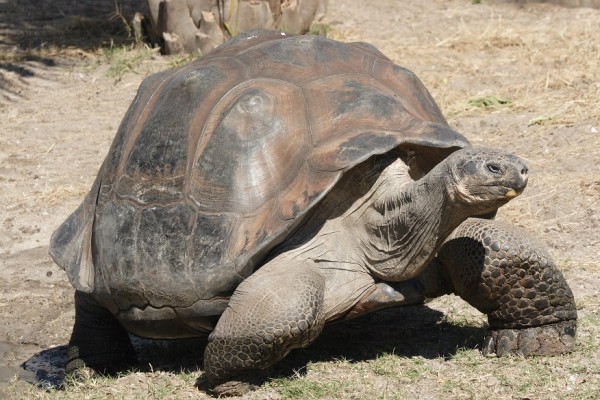Giant Tortoises Return from Near Extinction
| Ana Verayo | | Oct 29, 2014 03:43 AM EDT |
(Photo : Wikimedia) Giant Galapagos Tortoises were nearly extinct after goats started eating them in the 19th century
After struggling to survive, the population of giant tortoises on the Galapagos island of Española is on the rise again. Its numbers dwindled to only 15 in the 1960s after feral goats that came to the island in the 19th century almost wiped out the tortoises.
To date, there are now 1,000 tortoises breeding on their own, securing the population. This conservation effort is clear evidence of how biologists and conservationists can work together to recover animal species on the brink of extinction.
Like Us on Facebook
The giant Galapagos tortoise was declared extinct when the Galapagos National Park Service sent conservationists in Española Island to search for surviving tortoises. Luckily, the conservationists found 15 giant tortoises that were later bred in captivity to increase their numbers.
When tortoise numbers reached around 2,000, conservationists released the animals back into the wild in 1975. After 40 years, the giant Galapagos tortoise population is now stable, according to a new study published in the journal, PLOS ONE.
James Gibbs, lead author of the study, said this conservation success story has been remarkable even if it's been under wraps. To date, half the tortoise population originally bred in captivity are still alive and breeding independently. Gibbs noted that the tortoises can now thrive in the wild without any human intervention.
Goats were the root cause of the tortoises' rapid decline in population 40 years ago since they ate the tortoises. The goats died out in the 1990s.
In 2012, another tortoise species called the Pinta tortoise went extinct after the last of its kind named Lonesome George died. Using the same technique to recover the giant tortoise population, conservationists will now apply it to Pinta tortoise hybrids recently discovered on Pinta Island.
Tagsgiant tortoise, giant turtle, galapagos island, Giant Tortoises Back from Near Extinction as Populations Increase in Galapagos Island, Ecuador, giant galapagos tortoise
©2015 Chinatopix All rights reserved. Do not reproduce without permission
EDITOR'S PICKS
-

Did the Trump administration just announce plans for a trade war with ‘hostile’ China and Russia?
-

US Senate passes Taiwan travel bill slammed by China
-

As Yan Sihong’s family grieves, here are other Chinese students who went missing abroad. Some have never been found
-

Beijing blasts Western critics who ‘smear China’ with the term sharp power
-

China Envoy Seeks to Defuse Tensions With U.S. as a Trade War Brews
-

Singapore's Deputy PM Provides Bitcoin Vote of Confidence Amid China's Blanket Bans
-

China warns investors over risks in overseas virtual currency trading
-

Chinese government most trustworthy: survey
-

Kashima Antlers On Course For Back-To-Back Titles
MOST POPULAR
LATEST NEWS
Zhou Yongkang: China's Former Security Chief Sentenced to Life in Prison

China's former Chief of the Ministry of Public Security, Zhou Yongkang, has been given a life sentence after he was found guilty of abusing his office, bribery and deliberately ... Full Article
TRENDING STORY

China Pork Prices Expected to Stabilize As The Supplies Recover

Elephone P9000 Smartphone is now on Sale on Amazon India

There's a Big Chance Cliffhangers Won't Still Be Resolved When Grey's Anatomy Season 13 Returns

Supreme Court Ruled on Samsung vs Apple Dispute for Patent Infringement

Microsoft Surface Pro 5 Rumors and Release Date: What is the Latest?










